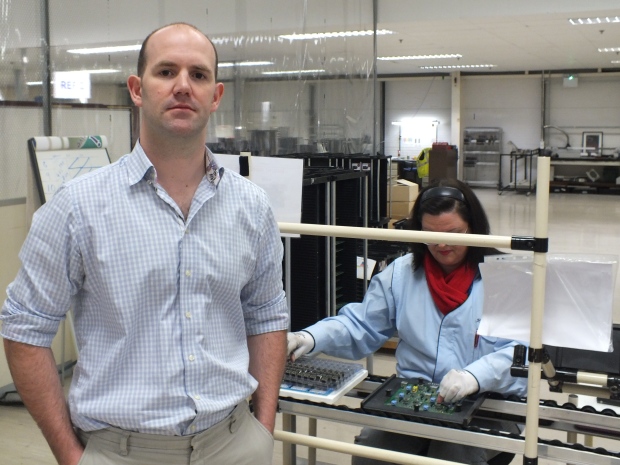No, your Raspberry Pi 3 won't overheat in everyday use, says its creator

Eben Upton at a factory in Wales where Raspberry Pi boards are made.
The Raspberry Pi 3 will not overheat in regular use, the board's co-creator has said, following reports of the newly released $35 computer hitting close to 100C during tests.
When benchmarking the board, some owners reported the Pi 3 heated up to the point where it reduced its speed in order to keep its temperature in check.
However, co-creator of the board Eben Upton has said that - outside of synthetic tests that place the board's processor under prolonged strain - the Pi 3 is highly unlikely to behave in this way.
"In everyday use I would say 'never'," he said in response to a question about how often boards would reach temperatures where they need to throttle their speed.
He points out that the spikes in temperature reported by these users stem from benchmarks where the Pi's processor is put under sustained heavy load - in this case using the benchmark sysbench to calculate prime numbers.
See also
The strain placed on the board during these benchmarks - where the CPU is subject to prolonged heavy demand - isn't representative of workloads that will be placed on the processor in everyday use.
While a typical workload for the Pi might see the demand on the CPU spike momentarily, in the vast majority of use cases these periods of high CPU utilisation will not be sustained for long periods, he said.
"In most use cases you see a very spiky performance profile. So what you're looking at is 'Can I run very fast for a second?' or 'Can I run very fast in bunches of 50ms?'."
And while putting a case on the board will increase the temperature, again for the typical user it will not drive the board to become hot enough to throttle its speed - he said.
Upton explains the throttling behavior as being a consequence of making the Pi's hardware more powerful.
"It's the difference between Raspberry Pi 1, with a relatively small amount of processing power, and Raspberry Pi 3 with 10x that amount of processing power. As we get towards laptop levels of performance we have to apply the same sort of techniques you apply for managing the thermals [in a laptop]."
Photos of the Raspberry Pi through the ages: From the prototype to Pi 3 B+
When not under load, the Pi's CPU operates at 600MHz, increasing its speed to 1.2GHz when tasked with carrying out a heavyweight operation. Operating at this higher speed will begin to raise the temperature of the board and when it goes over 80C the Pi 3 will start to reduce its operating frequency in order to reduce the heat emitted by the CPU. Its speed is gradually reduced, dropping down to 600MHz if the board hits 85C or over.
The Pi 3 is based around a 64-bit processor, compared to the 32-bit CPU used in the Pi 2. The Pi 3's processor is based on a newer architecture, the ARM Cortex A53, than that of the Pi 2's processor, which is built around the ARM Cortex A7 core. This newer architecture is capable of carrying out more work per processor cycle. The Pi 3's CPU is quad-core, like the Pi 2's, but is faster - clocked at 1.2GHz, some 300 MHz higher than that of the Pi 2.
The third iteration of the popular single board computer launched earlier this week. While the first run of boards was quick to sell out, 100,000 boards are being manufactured each week to help meet high demand.
